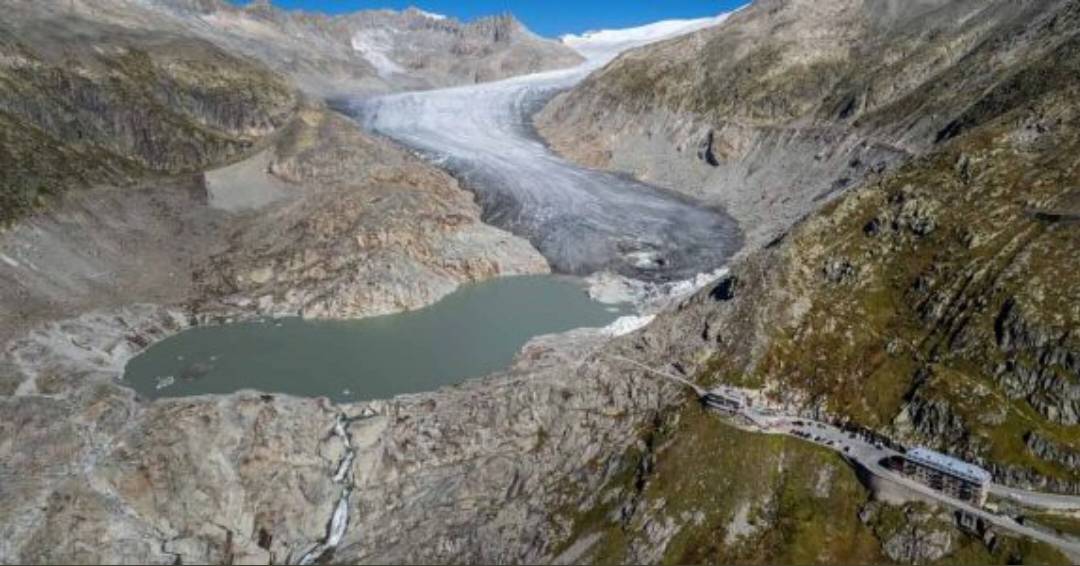
Switzerland’s glaciers have experienced their second-worst melting rate this year, following the record losses seen in 2022. Over the past two years, these glaciers have diminished in volume by a staggering 10%, according to GLAMOS, the monitoring body responsible for tracking glacier changes.
This alarming trend represents a double blow to Swiss glaciers, occurring during the country’s third-hottest summer ever recorded. The combined effects of reduced winter snowfall and exceptionally warm summer temperatures have led to losses equivalent to what was typically seen in the three decades before 1990. The situation is grim, described by GLAMOS as “catastrophic.”
Matthias Huss, who heads Glacier Monitoring Switzerland (GLAMOS), commented on the dire circumstances, stating, “This year was very problematic for glaciers because there was really little snow in winter, and the summer was very warm. The combination of these two factors is the worst that can happen to glaciers.”
Switzerland is home to more than half of the glaciers in the Alps, a region where temperatures are rising at approximately twice the global average rate due to climate change.
The challenging conditions in 2023 resulted from low winter snowfall and an early start, as well as a late end to the summer melt season, as reported by GLAMOS.
In August, during the peak of the melting season, the Swiss weather service recorded a new high for the elevation at which precipitation freezes, reaching 5,289 meters (17,350 ft). This altitude surpassed the previous year’s record of 5,184 meters and even exceeded Mont Blanc’s summit.
Pictures shared by Huss on social media during data collection trips in recent weeks painted a grim picture. They depicted new lakes forming adjacent to glacier tongues, streams of meltwater coursing through ice caves, and bare rock emerging from the shrinking ice. In some areas, long-lost bodies have been recovered as ice sheets recede.
Huss expressed his concern, saying, “We are really losing the small glaciers. The remnant ice is becoming covered by rocks and debris, regions that have been snow and ice covered over the last decades and centuries are becoming just black slopes that are dangerous because of rockfall.” In certain locations, GLAMOS had to halt monitoring due to the rapid melt.
“We have closed down one of our monitoring programs on a small glacier in central Switzerland because it just became too dangerous to measure,” Huss revealed. “It became very small and therefore unrepresentative.” Swiss records for glacier changes date back to at least 1960 and, in some cases, as far back as 1914.

Post Your Comments